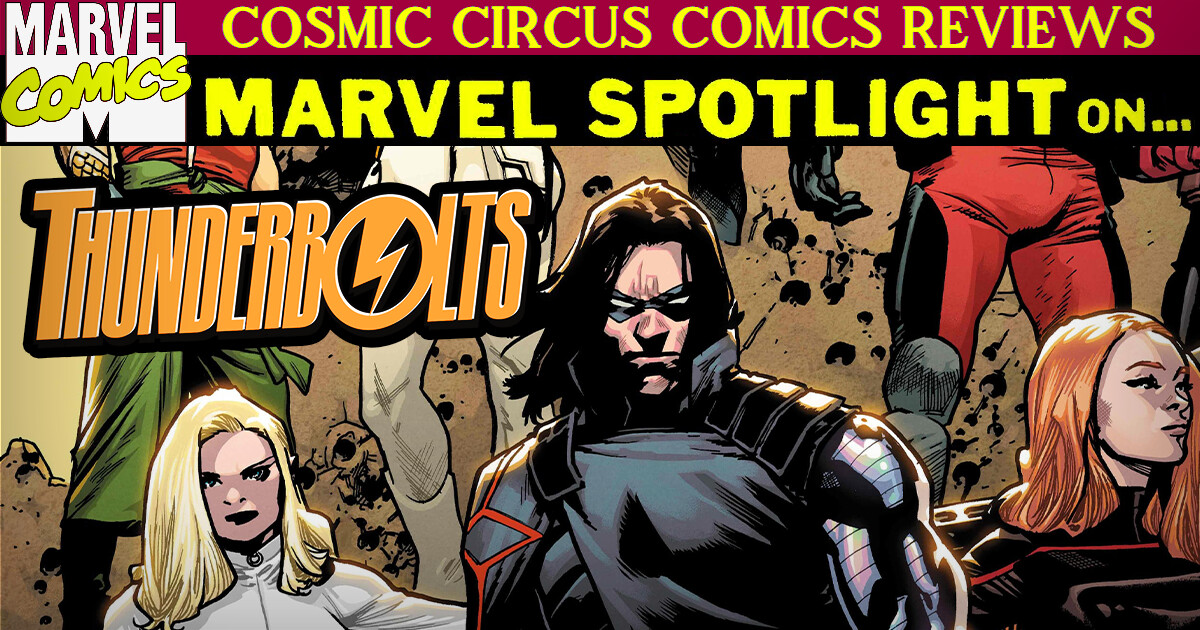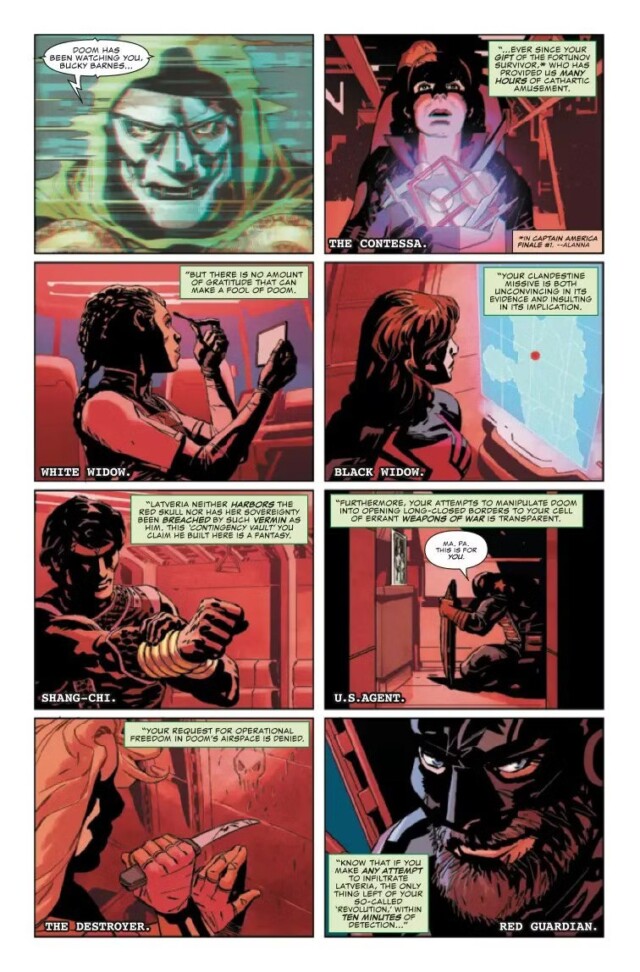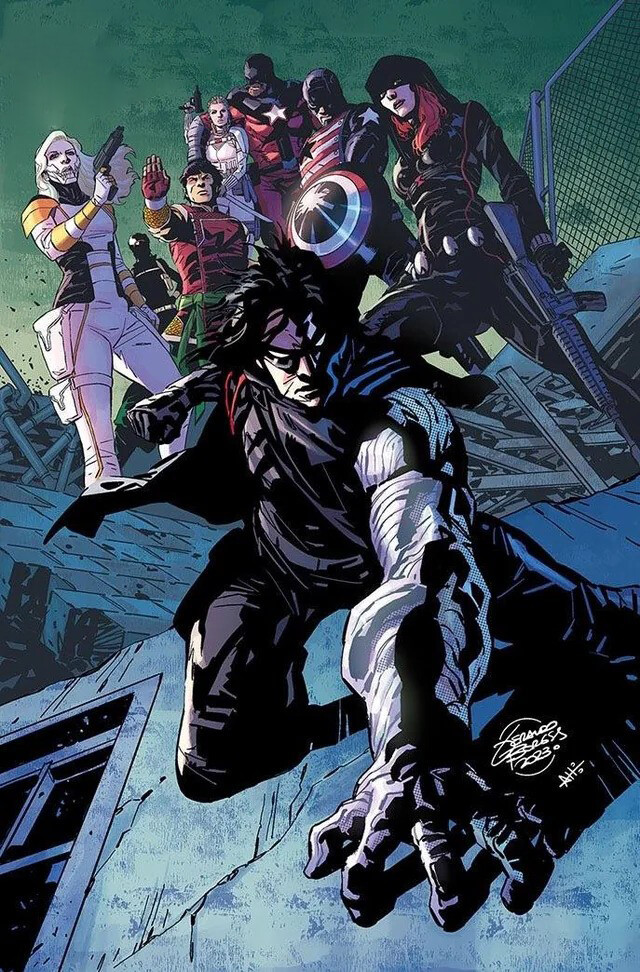Marvel Comics Spotlight: ‘Thunderbolts’ (2023)

Over the years, the team called “Thunderbolts” has carried a specific and unique weight in the Marvel Universe. Unlike the Avengers or X-Men, the Thunderbolts have always stood in a morally gray zone as a team forged not by ideals or family, but often by necessity, manipulation, political ambitions, or redemption. Since the debut of the original team in 1997 under the pencils of Kurt Busiek and Mark Bagley, the Thunderbolts have had various incarnations. They started as a group of villains pretending to be heroes, to become a team of reformed criminals who were trying to do good, and even to government-sanctioned teams. Each iteration had its adventures and explored the boundaries of what it means to be a symbol of heroism (or pretending to be a hero) in a world where trust and truth are rare commodities.
The 2023 Thunderbolts series, written by Jackson Lanzing and Collin Kelly, with artwork by Geraldo Borges, serves as a modern version of this team. This team from 2023 was meant to show us a similar team from the Thunderbolts* The New Avengers movie. With Bucky Barnes a.k.a. the Winter Soldier as the initiator of the Thunderbolts initiative, the new team is a black-ops squad tasked with changing the world order through morally ambitious missions. This miniseries is more than just a rebranding. It’s a full ideological shift that questions the readers if the road to peace must be paved in secrecy and controlled chaos.
Thunderbolts (2023): The story
The story begins in the wake of Bucky Barnes’ fallout from Captain America: Sentinel of Liberty story arc, where he took down the Outer Circle, a secret organization like the Illuminati manipulating world events for decades. After eliminating this group, Bucky obtains their valuable intelligence network, and with it, the burden of responsibility to bring down everything and everyone who worked for them. Rather than destroy the information or hand it off to the government, Bucky uses it to assemble a new Thunderbolts squad. A squad that doesn’t ask for permission, one that isn’t held down by bureaucracy or idealism, but instead operates under one mantra, which is justice.
Bucky’s Thunderbolts team of people is not full of traditional heroes. He recruits characters who have lived in the grey area of morality for a long time. They are Contessa Valentina Allegra de Fontaine, John Walker (a.k.a U.S. Agent), Alexei Shostakov (a.k.a. Red Guardian), Yelena Belova (a.k.a. White Widow), Sharon Carter (a.k.a. “Destroyer”), Shang-Chi, Natasha Romanoff (a.k.a. Black Widow with a symbiote), and Songbird.

The missions that are taken by the Thunderbolts are aggressive, brutal, intensive, and targeted. For example, one arc involves destabilizing criminal empires and warlords across rogue states, like Red Skull. Another sees them infiltrating sovereign territories to extract dangerous weapons of mass influence, often with little regard for the local authorities. Their final confrontation takes them to Latveria, to fight Victor von Doom, where the question becomes whether even Doctor Doom is too essential to the global balance to be removed. Remember that in the comics, Doctor Doom remains neutral for a lot of time and tries not to fight others for the safety and sovereignty of his people. Even though he is evil, he won’t let this be a reason for flashy battles to take place in the city streets of his home.
The emotional point of the story resides in Bucky himself. His evolution from brainwashed assassin to a person seeking redemption has always been a rough thing to write. In this series, that inner struggle of his is one of the main story arcs. Bucky wants to prevent the tragedies of the past from repeating, but in doing so, he walks dangerously close to becoming another tyrant, yet he reflects on himself to not become one. His methods are efficient but brutal, and the toll it takes on his conscience is bigger than one might think.
Adaptation and inspiration: Thunderbolts*/The New Avengers
Marvel Studios has a long history of adapting certain moments/stories from recent comic books to create their film narratives. Just as some movies have taken inspiration from big comic book events, the recent Thunderbolts* The New Avengers movie clearly drew heavily from this 2023 series, both in tone and theme; as well as in showing the grey areas and complexity of the characters.
The lineup for the 2025 film is nearly a mirror reflection of the comic. We have Bucky Barnes (Sebastian Stan) taking a leadership role, a more prominent version of Valentina (Julia Louis-Dreyfus) operating in the shadows, U.S. Agent (Wyatt Russell) being U.S. Agent, Yelena Belova (Florence Pugh), and Red Guardian (David Harbour). They are making the team together with Ghost (Hannah John-Kamen), and Bob/Sentry (Lewis Pullman).
The major wildcard, as an addition to this team, is of course the Sentry/Bob Reynolds. Bob’s internal war against his demons, rough past, and depression mirrors the broader conflict within the Thunderbolts, as well as in ourselves. It makes us and the team wonder if they are preventing greater evils, or if they are becoming one?
Final thoughts on this Marvel Comics series
The 2023 Thunderbolts comic series is a perfect reminder that the lines between hero and villain are rarely as clean as we think they are. Any Thunderbolts’ story isn’t about saving the world in the traditional sense. It’s about shaping the world, often through uncomfortable means. What Lanzing and Kelly achieved with this 2023 miniseries is an amazing narrative that feels urgent, dangerous, sophisticated, and relevant in an era when trust in institutions is at an all-time low.

Geraldo Borges’ art brings a dark, vivid, and emotional cinematic realism to the pages of this comic book. The fight scenes are intimate and brutal, and the expressions are full of inner pain and are layered with emotional weight. Each panel seems to be full of characters trying to survive under the pressure of the choices that they are making. The use of shadows and sharp angles makes sure to show the readers the true nature of the team’s operations. There are no bright skylines or cheering crowds, there are just dark alleys, tense mission briefings, and the silent, persistent disappearance of morality. But in the end, it’s the promise to never sell the good values you believe in, even in the most dangerous situations.
What makes this version of the Thunderbolts so good is its refusal to glorify its characters and make them pure heroes. Bucky is not a noble hero. He’s a man who’s seen too much and is trying to do a lot with too little support from the others. Valentina is a manipulative person, but not one without a strategy. Shang-Chi is the conscience of the group, but not entirely correct about everything. Together, they all create a team that can collapse under pressure at any moment. The unpredictability and usefulness of the team are what make this series such an outstanding read.
With the Thunderbolts* movie in the cinemas, this comic serves as an essential story arc for people who liked the movie, to further explore the morality and the idea behind this team. It’s not just for fans of the franchise, but for anyone interested in how superhero fiction can explain/attack certain complex questions about power, redemption, and responsibility. It’s further proof of Marvel’s ability to adapt the current world and political problems to the pages of their comic books.
When the traditional hero’s journey no longer fits the moment, stories like this one step in to fill the emptiness. Not with capes, catchphrases, saving the world from galactic or multiversal threats. No, they do it with silence, secrecy, and scars that never truly heal, and exploring the problems we all face, to give everyone the strength to fight them.
Have you read Thunderbolts (2023)? What did you think? Let us know on our Discord, or on social media, @mycosmiccircus/@TheCosmicCircus.com on Bluesky!


